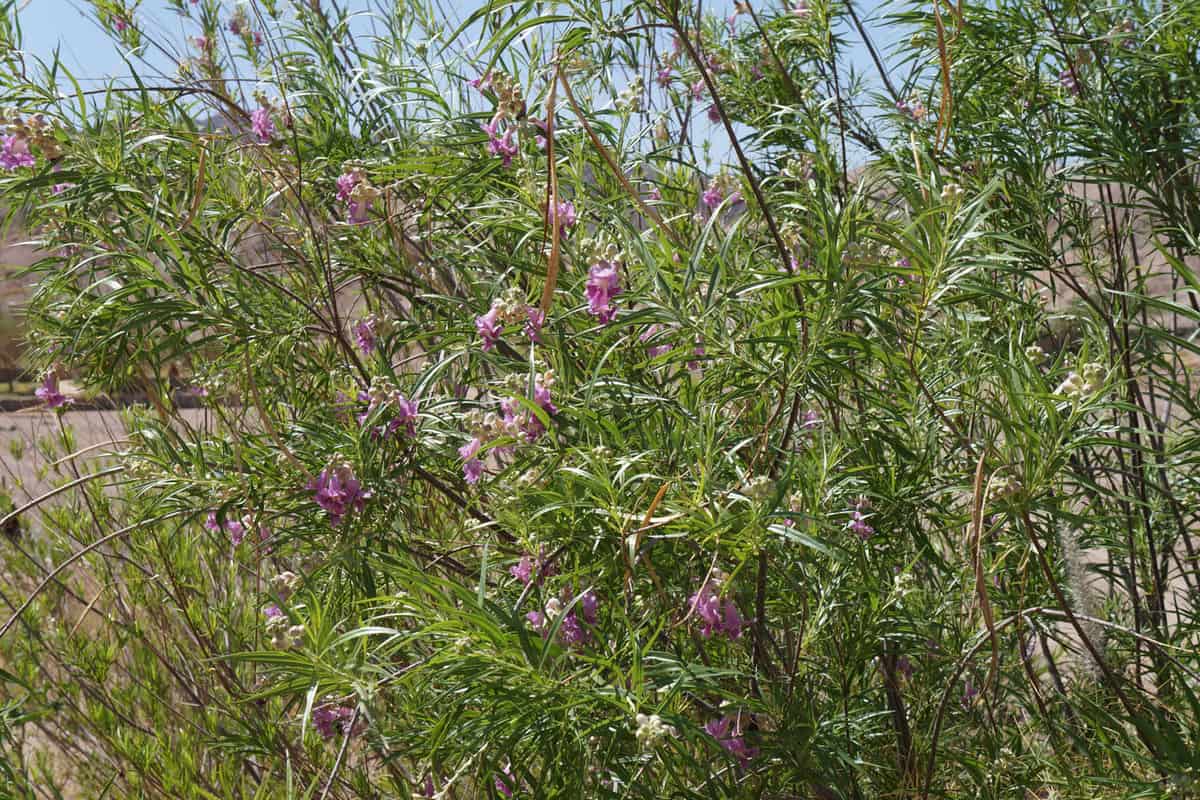Gardening in arid conditions often calls for plants that can tolerate drought, poor soil, and blistering temperatures.
And if you're looking for a tree that checks all these boxes, you've likely come across the Desert Willow.

But, as enchanting as its flowers may be, you might be wondering about its underground behavior.
Does the Desert Willow have invasive roots that could spell trouble for your garden? We've got the answers for you to put your mind at ease.
What is a Desert Willow?
The desert willow (Chilopsis linearis) is a small to medium-sized deciduous tree native to the American Southwest and northern Mexico.
Although it carries the name "willow," it's not actually a true willow but a member of the Bignoniaceae family.
Renowned for its delicate, trumpet-shaped flowers that range in color from lavender to pink, this beauty can be quite a showstopper when in bloom.
Growth Requirements
Thriving in USDA hardiness zones 6 through 9, the desert willow is an adaptable tree well-suited for xeriscaping or low-water gardens.
It loves full sun and can tolerate drought once established, though periodic deep watering will keep it looking its best.
The desert willow isn't particularly picky about soil types but performs well in well-drained, sandy, or gravelly soils.
Generally, it reaches heights of 30 feet at maturity and about 25 feet spread, making it a good choice for small yards or as an ornamental street tree.
Does Desert Willow Have Invasive Roots?
The question of the hour—does the desert willow possess invasive roots?
The short answer is no; it does not have a particularly invasive root system compared to other tree species.
Desert willow is a low-maintenance tree that isn't known for having invasive roots, which makes it a great option for residential gardens and native landscapes.
Root Systems of Desert Willows
Understanding the root system of the desert willow can help you plan its placement in your landscape.
The tree features a deep taproot with some lateral root growth, making it ideal for stabilizing eroding soil.
The taproot allows it to reach water far beneath the surface, a trait that contributes to its drought tolerance.
Unlike the sprawling root systems of some other drought-tolerant species like the mesquite or salt cedar, the desert willow’s roots are generally non-aggressive and non-invasive.
They are unlikely to damage underground utilities or interfere substantially with other plants in the garden.
Growth and Spread
In its natural habitat, the desert willow tends to grow along arroyos, washes, and streams where its roots can access sub-surface water.
However, this does not mean that the tree will aggressively seek out water sources in your yard. It is adaptive, not invasive.
When planting a desert willow, it's generally safe to place it at least 10 to 15 feet away from any structures or underground utilities for optimal growth and minimal root interference.
Compatibility with Other Plants
The moderate root system of the desert willow makes it a good neighbor to other plants.
It does not compete aggressively for water and nutrients, unlike some other drought-resistant species.
This means you can safely incorporate it into a diverse, water-efficient garden without worrying about it choking out other plants.
Effects on Nearby Plants
While Desert Willow roots don't actively damage or compete with nearby plants, their drought tolerance means that they require less water than many other species.
As a result, when planting them adjacent to other plants, pay attention to your watering regimen.
Make sure you don't over-water the Desert Willow or under-water your other plants, as both will suffer if not attended to properly.
Effects on Infrastructure
Unlike some other tree species, Desert Willow roots are not known to cause significant damage to pavements, sidewalks, or buildings.
These roots typically grow deep and narrow rather than wide, making them less likely to push up against surfaces and cause harm.
Therefore, you can plant your Desert Willow in your landscape without much concern for potential root-related infrastructural damage.
Desert Willows are Great Companion Plants
If you've been holding off on adding a desert willow to your garden due to concerns about invasive roots, you can lay those worries to rest.
The tree’s roots are relatively well-behaved and offer the added benefit of being highly drought-tolerant.
So go ahead, make room for this Southwestern beauty; it's sure to dazzle without wreaking havoc below the ground.
For more information about Desert Willows, here are more resources:
5 Most Common Desert Willow Tree Problems And Solutions
How Fast Do Desert Willows Grow [And How Tall And Wide Do They Get]?
